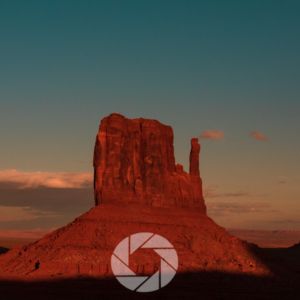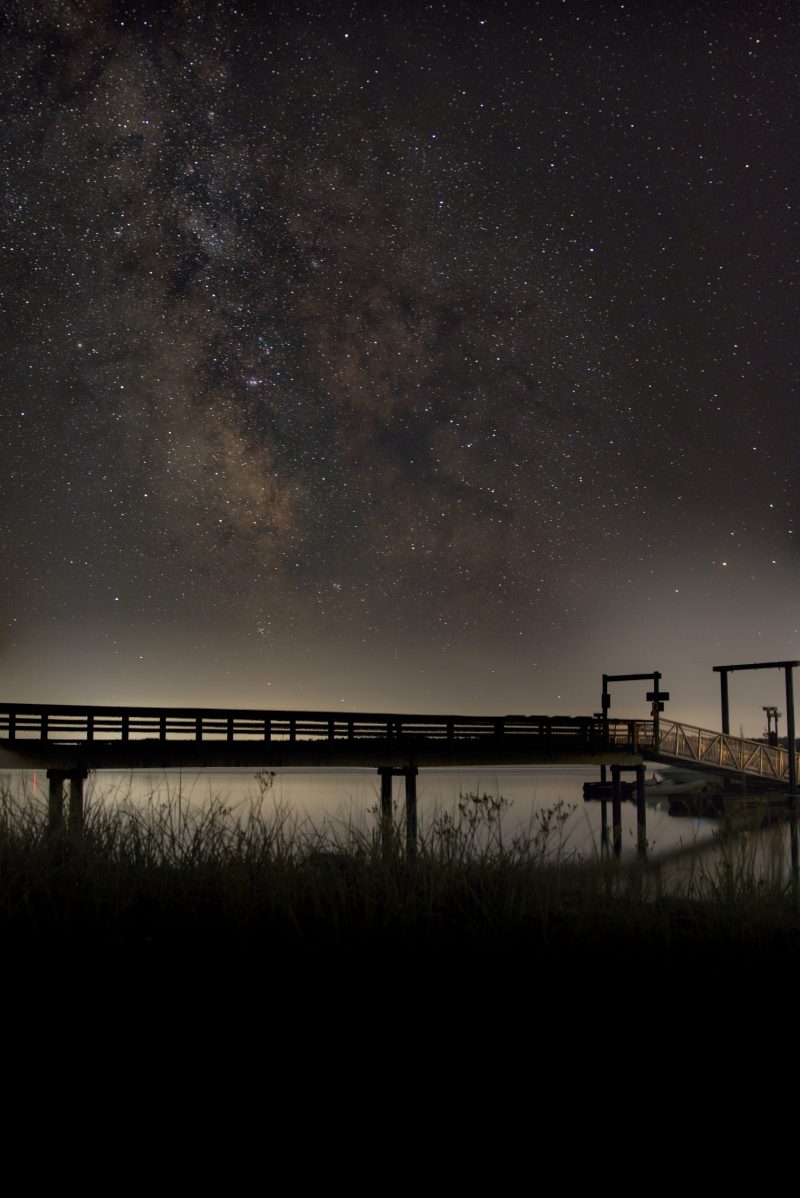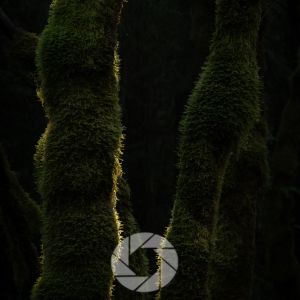
White balance in photography might sound like something technical reserved for pros, but it’s actually one of the easiest ways to elevate your landscape photos; once you know how.
If you’ve ever taken a picture that looked too blue, too orange, or just a little “off,” you’ve already seen what happens when white balance isn’t quite right.
In this post, I’m breaking down what white balance is, why it’s important in landscape photography, and how to use it to your advantage; especially when working with changing natural light.
Whether you’re chasing golden hour on the coast, photographing misty forests, or capturing the Milky Way, understanding white balance is key to nailing your shots.
White Balance in Photography: A Beginner’s Guide to Getting It Right in Landscape Photography
What Is White Balance in Photography?
If we want to define white balance, it’s the setting on your camera that helps adjust for the color temperature of the light in your scene. Natural and artificial light have different color “temperatures” that can skew your image to warm (orange/red) or cool (blue) tones.
Your camera tries to guess what “white” should look like in a given lighting scenario, and sometimes it gets it wrong. That’s where white balance settings come in; they let you either correct or creatively adjust the color tones in your shot.
Discover Your Next Journey – These Tours are designed for people who connect with light and landscape.
Why Is White Balance Important in Landscape Photography?
Landscape photographers are always at the mercy of natural light, and that light shifts in both intensity and color temperature throughout the day.
If you’re shooting a sunrise with the wrong white balance setting, you might lose the soft pinks and oranges you woke up early to capture. Too much warmth during midday can flatten out shadows and dull your colors.
Getting the white balance in photography right helps preserve the feeling of the scene, whether that’s the cold, sharp light of a mountain summit or the warm, magical tones of sunset over a lake.
Learn more about Kelvin Color Lighting scale here.
What Is the Best White Balance for Night Photography and Milky Way Shots?
And at night? A warm white balance setting can turn your Milky Way into a muddy display, without clear colors and contrast. Compare that to a bluer custom Kelvin setting, which is not necessarily ideal for the shot below either (Kelvin setting was too high).
For night sky and Milky Way images, the best white balance is usually a manual Kelvin value around 3500K – 4500K. This helps you preserve the natural blues of the sky and keeps the stars crisp and color-neutral.
Using “Auto” white balance at night usually results in muddy, yellowish tones that don’t reflect what you actually saw.
Tip: If you’re photographing with a wide-angle lens under a dark sky, pay attention to light pollution in the frame—adjusting your white balance can help neutralize the glow from nearby cities or towns.
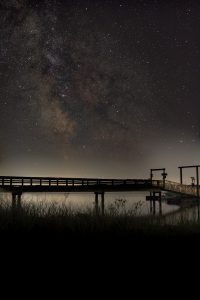
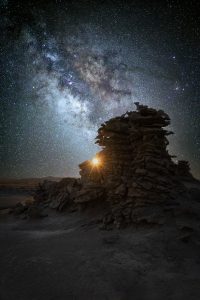
White Balance Guide: Situations, Settings & Kelvin Scale
Let’s break it down with this handy chart. This white balance guide compares camera settings with ideal situations and corresponding Kelvin values to help you get started:
| White Balance Setting | Sunrise/Sunset | Midday Sun | Shade | Cloudy | Indoor Light | Night Sky / Milky Way |
|---|---|---|---|---|---|---|
| Auto (AWB) | Okay | Works well | Inconsistent | Often adds blue tones | Usually decent | Tends to misjudge darkness |
| Daylight (~5200K) | Too cool | Best match | Too cool | Too cool | Too warm | Way too warm |
| Cloudy (~6000K) | Enhances warmth | Warm tones | Balanced | Best match | Too warm | Too warm |
| Shade (~7000K) | Rich golden tones | Overly warm | Best match | Slightly warm | Too warm | Still warm |
| Tungsten (~3200K) | Too blue | Blue cast | Too cool | Too cool | Best for incandescent light | Too blue |
| Fluorescent (~4000K) | Cool tones | Slight blue tint | Okay | Slightly cool | Best for office light | Not suitable |
| Custom (Kelvin Set) | ~5500K–6500K | 5200K–5500K | ~6500K | ~6000K | ~3200K | ~3500K starting point |
What Does a Wide Angle Lens Do for White Balance?
Okay, now we’re getting nuanced. While white balance in photography and lens selection are separate settings, wide-angle lenses, used often in landscape work, can exaggerate lighting across a scene.
That’s because they capture so much of the environment at once: blue sky, golden sunlight, deep shadows. This range of tones makes getting accurate white balance even more important to avoid your photo looking unnatural or patchy.
What Is the Best White Balance Setting?
There’s no one-size-fits-all answer, but for landscape photography, the “Cloudy” setting (around 6000K) is a favorite among pros. It adds just a touch of warmth, helping colors feel rich and vibrant without overdoing it.
That said, custom Kelvin values give you the most control especially if you’re chasing specific tones in post-processing.
When to Use a White Balance Preset vs. Manual Kelvin Setting
Use presets like Daylight or Shade when you’re in a hurry or just getting started. But once you start to see how changing light impacts your images, manual Kelvin control gives you more precision.
Tip: If you shoot in RAW (and I recommend you do), you can adjust white balance non-destructively in post-processing. But if you’re shooting JPEGs, getting it right in-camera matters a lot more.
What Happens When White Balance Is Off?
You get images that just feel “wrong.” The snow turns gray, the sunset is washed out, or your forest greens turn electric. Even if you get the composition right, a poorly set white balance can ruin the atmosphere you’re trying to capture.
That’s why this isn’t just a technical detail; it’s part of your creative voice.
White Balance Examples
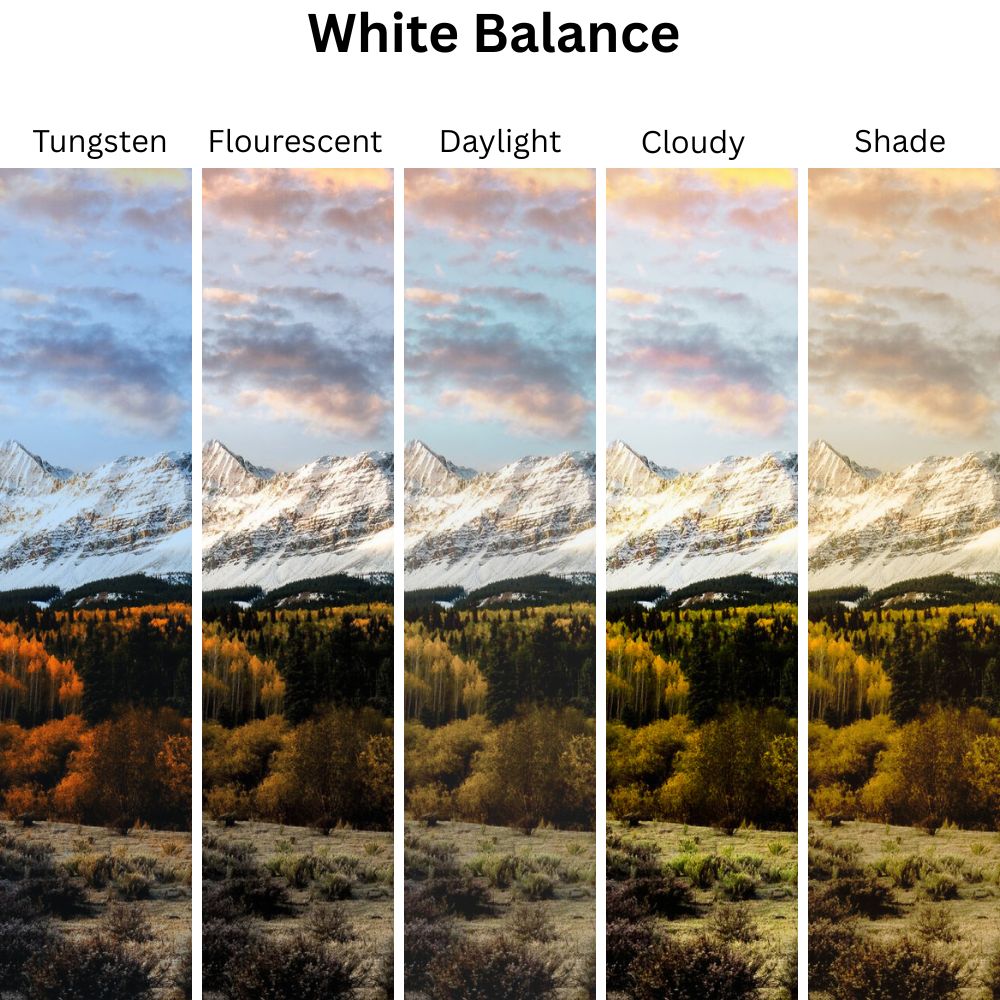
Use this white balance in photography examples to train your eye.
Once you see how each setting shifts the mood of a scene, you’ll start instinctively reaching for the right one as you shoot.
Is ISO the Same as White Balance?
ISO controls your camera’s sensitivity to light; white balance controls the color of that light. Adjusting ISO changes exposure and noise levels, while white balance changes how the light appears; warm, cool, or neutral.
Both are essential for working with natural light, but they do very different things.
Conclusion
White balance in photography is one of those tools that quietly makes a huge difference in your landscape shots. Understanding it allows you to take control of your color palette, avoid unnatural casts, and convey the emotion of a place more accurately.
Whether you’re capturing the golden glow of evening, the eerie stillness of blue hour, or the deep indigo of night skies, white balance is the bridge between what you see and what your camera sees.
So next time you’re out with your camera, don’t just think about composition. Pause, look at the light, and ask yourself: What color is the world right now? Then adjust your settings accordingly.
📸Learn for free!
➡️ FREE wallpapers
➡️ DISCOUNTS on future Tours and Tutorials
➡️ TIPS for improving your photography

I don’t share your information or email address with anyone and you can unsubscribe at anytime.
- White Balance in Photography: A Beginner’s Guide to Getting It Right in Landscape Photography
- What Is White Balance in Photography?
- Why Is White Balance Important in Landscape Photography?
- What Is the Best White Balance for Night Photography and Milky Way Shots?
- White Balance Guide: Situations, Settings & Kelvin Scale
- What Does a Wide Angle Lens Do for White Balance?
- What Is the Best White Balance Setting?
- When to Use a White Balance Preset vs. Manual Kelvin Setting
- What Happens When White Balance Is Off?
- White Balance Examples
- Is ISO the Same as White Balance?
- Conclusion
- 📸Learn for free!

